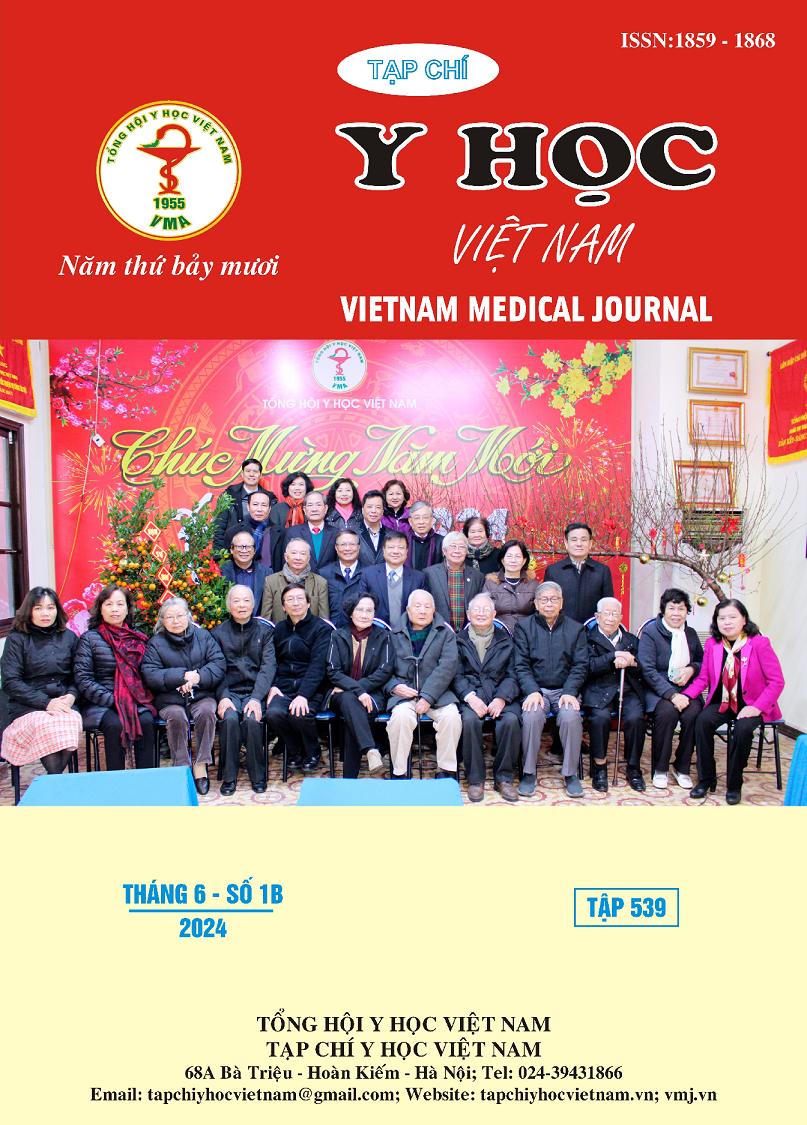COMPUTED TOMOGRAPHY IMAGING OF RECURRENT NASAL POLYPS AND RHINOSINUSITIS
Main Article Content
Abstract
Objectives: To analyse images of middle turbinate, uncinate, ostiomeatal complex, ethmoid bullar, bone lesions on computerized tomography film. Objects and methods: Descriptive study in 92 patients with aged > 15 years, diagnosed as rhinosinusitis with recurrent nasal polyps and treated at the National Hospital of Otolaryngology from 12/2008 to 4/2011. Results: Complete opaque images of maxillary sinus account for 40,9%, complete opaque images of front ethmoid sinus account for 52,7%, complete opaque images of posterior ethmoid sinus account for 37,5%, complete opaque images of sphenoid sinus account for 36,4%. The born lesions: thinning of the bone wall accounts for 13.0%. sclerosis of the bone wall accounts for 9,8%, remodeling of the nasal septum accounts for 9,8%. Images of middle turbinate hypertrophy are most common with 69,5%. Images of uncinate hypertrophy are most common with 69,9%. Images of lost ethmoid bullar are most common with 22,8%. Images of nasal polyps in ostiomeatal complex are most common with 91,3%. Conclusions: Complete opaque images of sinuses and ostiomeatal complex on CT films are most common. There are bone lesions combined on CT films: thinning bone, sclerosis, remodeling of nasal septum. Images of middle turbinate hypertrophy, unicinate hypertrophy, nasal polyps in ostiomeatal complex and lost ethmoid bullar are most common
Article Details
Keywords
Rhinosinusitis, nasal polyp.
References
2. Nguyễn Tấn Phong (2020), “Điện quang chẩn đoán trong tai mũi họng”, NXB y học Hà nội, tr: 144- 184.
3. Võ Thanh Quang (2015), Nghiên cứu chẩn đoán và điều trị viêm đa xoang mạn tính qua phẫu thuật nội soi chức năng mũi - xoang. Luận án Tiến sĩ Y học, Đại học Y Hà Nội.
4. Branstetter BF, Weissman JL (2015), “Role of MR and CT in the paranasal sinuses”, Otolaryngol Clin North Am 38(6):1279–1299.
5. Branstetter IV BF (2020), “Radiologic Imaging of Nasal Polyposis”, Nasal Polyposis, Springer, 45-50.
6. Friedman M, Touriumi DM (2017), “The effect of a temporary naso- antral window on mucociliary clearance: An experimental study”. The Otolatyngologic clinics of North America, 22(4): p.819-830.
7. Friedman M, Landsberg R, Tanyeri H, Schults RA, Kelanic S, Caldarelli DD (2020), “Endoscopic sinus surgery in patients infected HIV”. Laryngoscope, 110: p. 1613- 1616.
8. Harnsberger HR, Wiggins RH, Hudgins PA et al (2021), “Nose and sinus. In: Harnsberger HR (ed) Diagnostic imaging: head and neck”. Amirsys, Salt Lake City, p1–99.
9. Jiannetto DF, Pratt MF (2015), “Correlation between computed tomography and operative findings in functional endoscopic sinus surgery”. Laryngoscope, 105: p. 271- 278.
10. Stammberger HR, Posawetz W (2020), “Functional endoscopic sinus surgery”. Eur.Arch.Otorhinolaryngol, 247: p.63-76.


